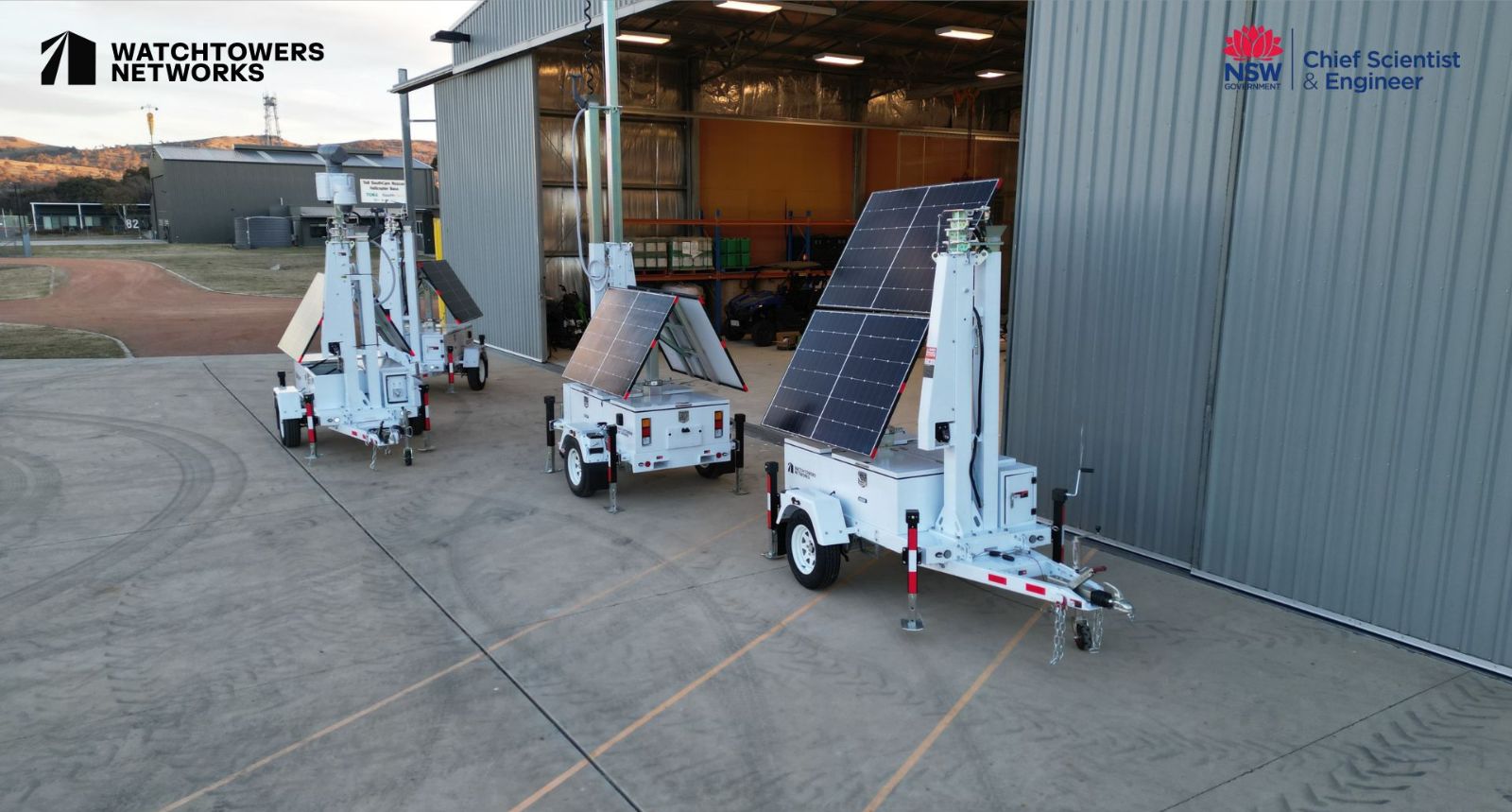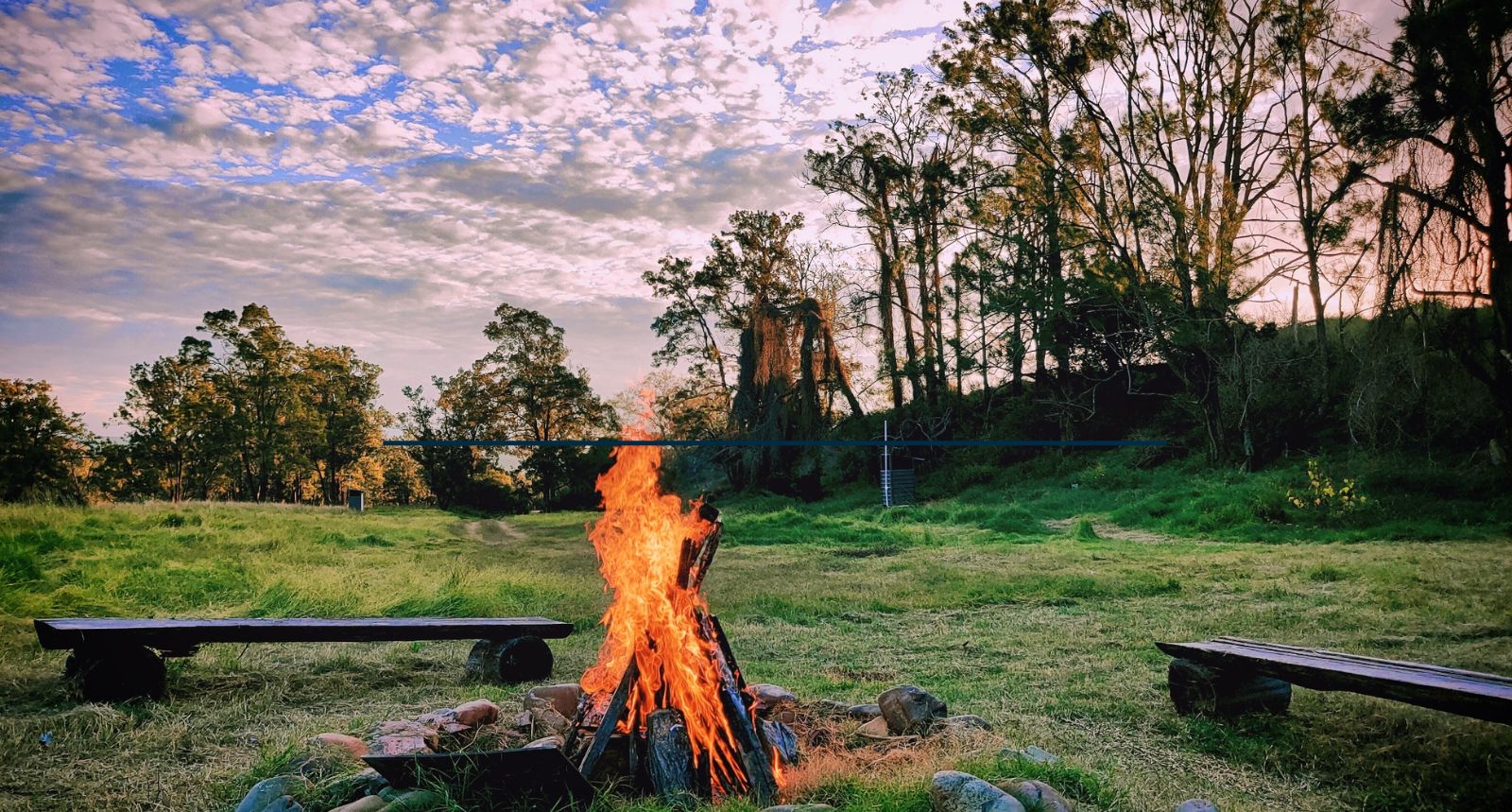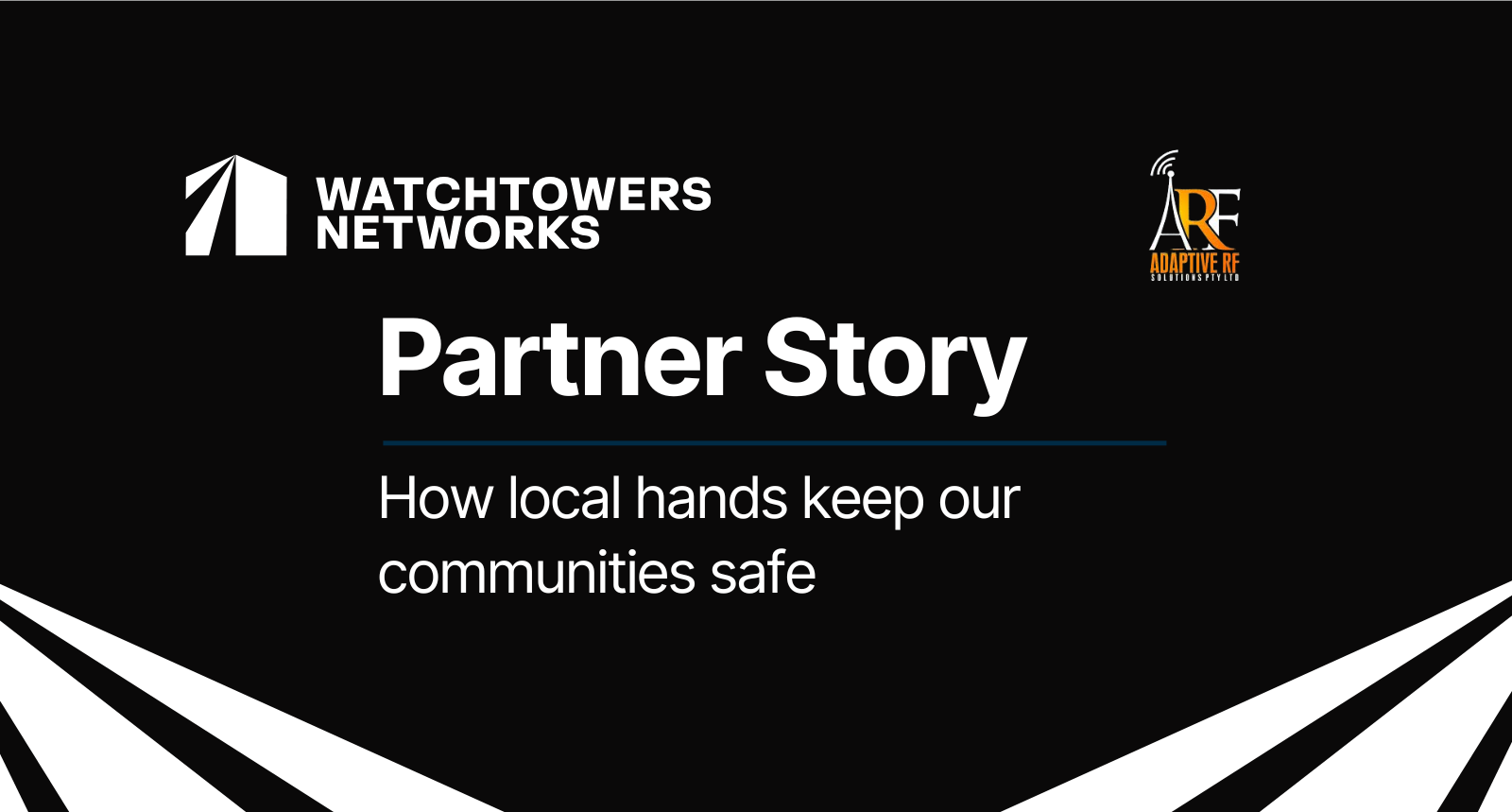When conditions change quickly, even the best-laid fire plans can be tested. Technology helps - but visibility gaps can still catch you off guard. Alongside the fixed Sentinel Stations that anchor our network, responders also need something that can move with the threat.
That’s the gap the Mobile WatchTower was built to close. Backed by the NSW Government’s Natural Hazards Detection System (NHDS) program, it’s now being formally trialled in the environments it was designed for.
Bringing mobile coverage into focus
The NHDS program supports practical ideas with real potential to strengthen fire detection and response. For WatchTowers, it’s a chance to build on what’s already happening on the ground: deploying Mobile WatchTowers in high-risk areas where permanent WatchTowers aren’t an option.
Developed in close partnership with rural fire services across NSW and the ACT, the Mobile WatchTower is a solar-powered surveillance unit that can be deployed quickly and easily. First responders can have it up and running in under 15 minutes, bringing visibility to areas that are hard to cover but too important to ignore.
It runs on the same system as our Sentinel Stations and connects straight into Command (our live operations platform) and CentralWatch (our community-facing alert system). For agencies already using WatchTowers, it works right out of the box, with no extra training or separate logins, just a new layer of visibility added to the existing system.
Across Southern NSW, WatchTowers is already protecting more than four million hectares - and now we’re becoming more mobile. Check out the short video below to get a glimpse of the Mobile WatchTower in action.
NSW first - but not the last
While the NHDS trial is formally a proof of concept, it will test the Mobile WatchTower in real conditions, with support from NSW RFS and Parks and Wildlife. What we learn will help guide how we support regions across the country - especially those looking for more flexible coverage alongside their existing infrastructure.
We’re especially proud that this trial is being run in our home state. WatchTowers was born in NSW in the wake of the Black Summer fires, and many of our earliest partnerships started here. The NHDS program, led by the Office of the Chief Scientist and Engineer, shows what’s possible when government backs local innovation that solves real problems.
More than anything, this trial reflects a belief that’s been with us from the beginning: good fire technology starts with the people who use it. The Mobile WatchTower came out of direct conversations with the people who use our systems every day. It was built around their feedback and designed to fill the specific gaps they were facing. The same teams that helped us refine our fixed WatchTowers helped guide this one too.
Importantly, the Mobile WatchTower won’t replace our Sentinel Stations - they each do a different job. Sentinel Stations are designed to stay put and see far, giving fire agencies a wide, stable view. Mobile units are more flexible. They can be moved as conditions change, sent into hard-to-reach areas, or placed near high-risk spots to keep a closer watch. Together, they give teams more ways to respond, especially when things are moving fast.
You can see from the video below how quick and easy the Mobile WatchTower is to set up, from trailer to live in under 15 minutes with a single operator.
Looking ahead, staying ready
While our WatchTower Sentinel Stations will always play a critical role, they’re only part of the picture. The Mobile WatchTower gives agencies another option: something they can move and rely on when conditions change.
With units already in use across Southern NSW, and more being tested through NHDS Phase 1, this trial is a chance to see how flexible infrastructure can support local teams on the ground. With more Mobile WatchTowers arriving soon, we’re preparing for broader field testing across NSW.
To the agencies, partners and communities already working with us - thank you. If you’re watching from the sidelines and are looking for new ways to strengthen your fire response, we’d love to talk.



.jpg)